I discovered the main clue the critter left behind. I had seen these mysterious small holes before. Horizontal rows of small cavities, called sapwells, drilled into the trunk of a Sugar Maple tree. They were so fresh that sap from the tree was still trickling out of each hole, still wet to the touch. The animal had just been here, and was most likely close by, waiting to return to lap up its reward. It was a type of woodpecker with an appropriate name-the Yellow-bellied Sapsucker.
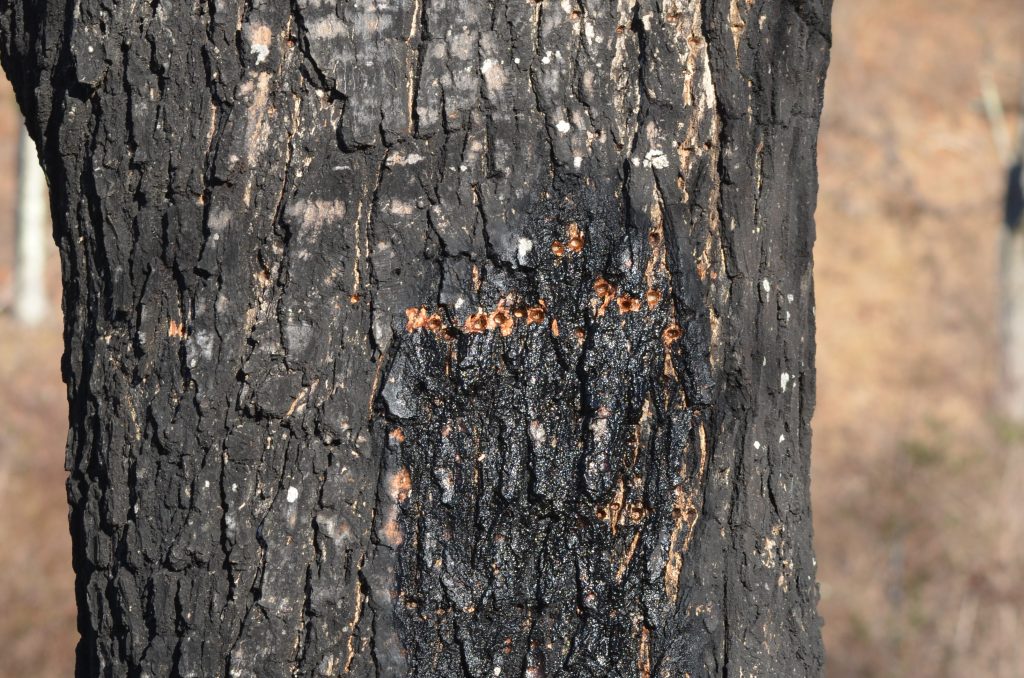
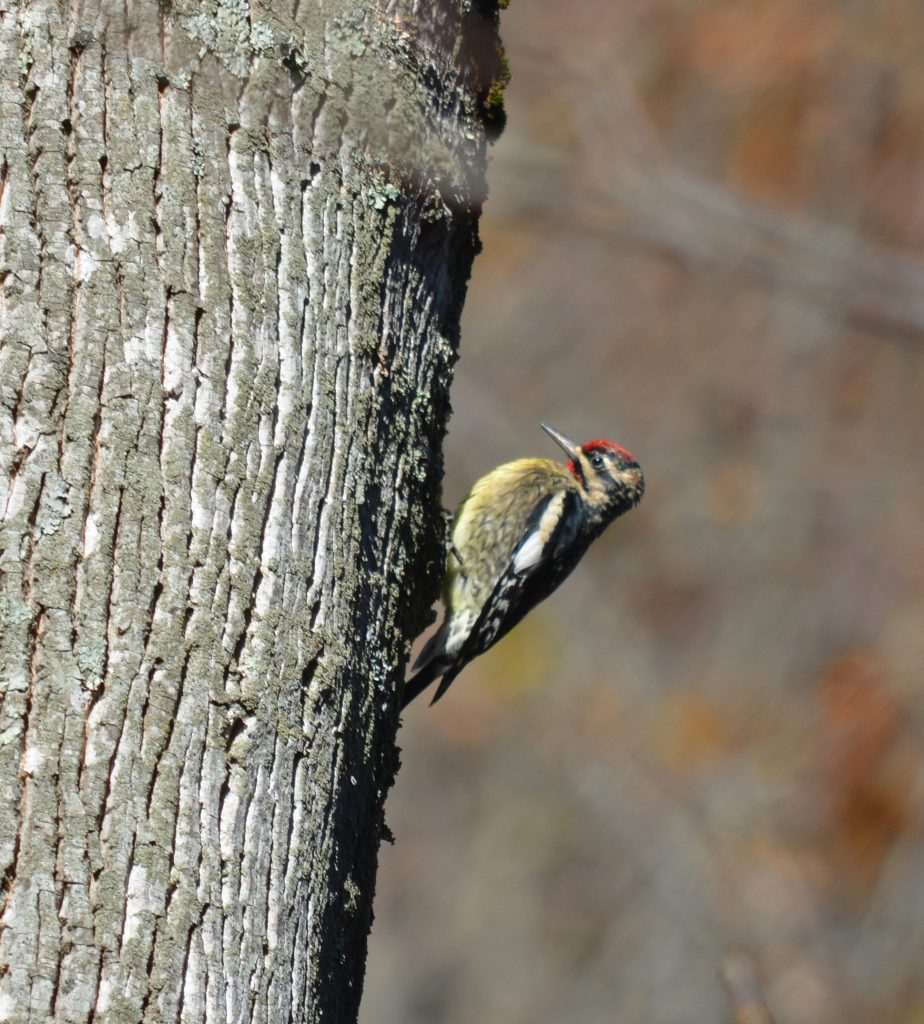
This robin-sized bird’s behavior of tapping into trees is like any other woodpecker. But its attraction to sucking up the oozing sap with its specialized, brush-tipped tongue is a bit unique in the bird world. The sap also attracts insects, which the sapsucker will gladly dine on along with the flowing, sweet liquid. In winter, they may feed on any leftover berries or fruits. Occasionally in the winter, we’ve had them visit our backyard bird feeding area, pecking away at the suet.
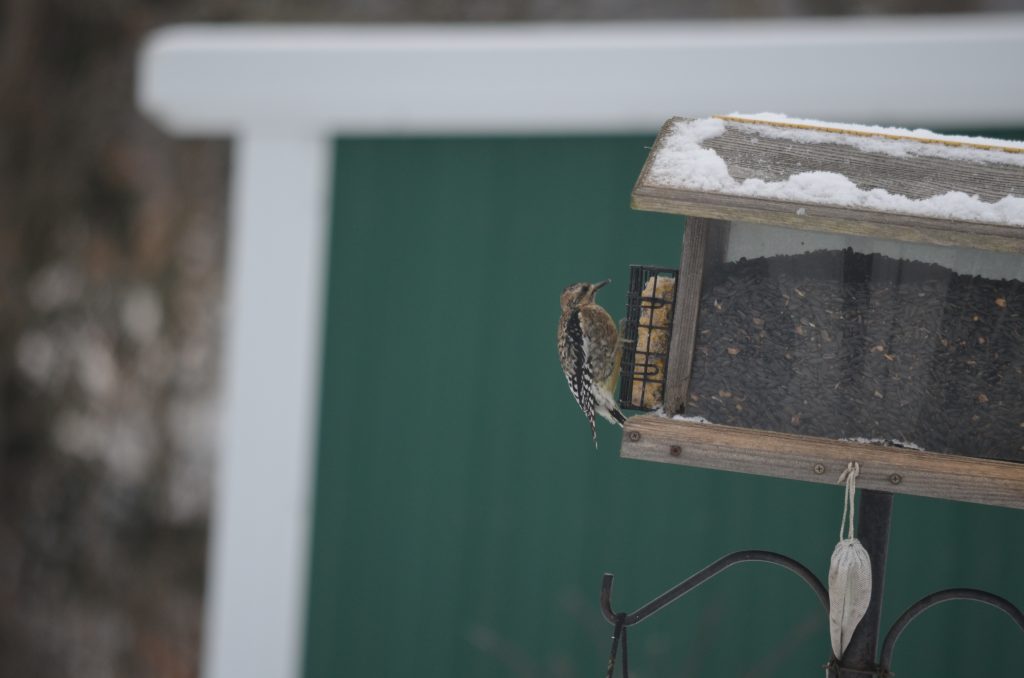
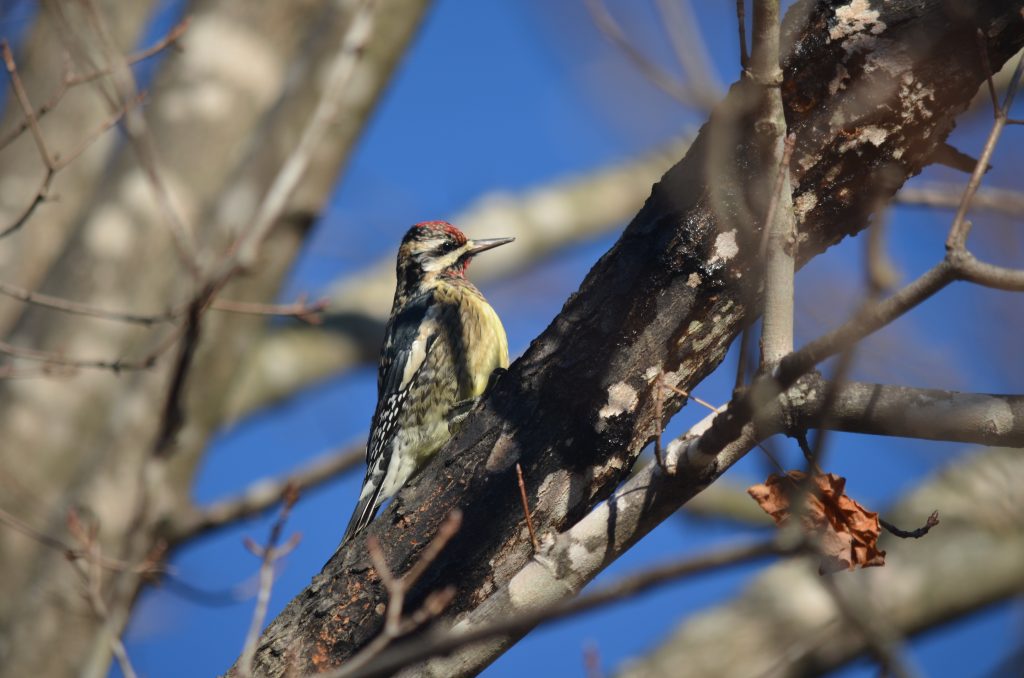
In the U.S. and Canada, there are four sapsucker species that occur-the Yellow-bellied, Red-breasted, Red-naped and Williamson’s. Only the Yellow-bellied can be found regularly in the east. The other 3 inhabit the western part of the country. They prefer mixed deciduous-coniferous forests, but can also be found in parks and backyard woodlots. Common trees they visit include maple, birch, aspen, poplar and several fruit trees, like apple trees.
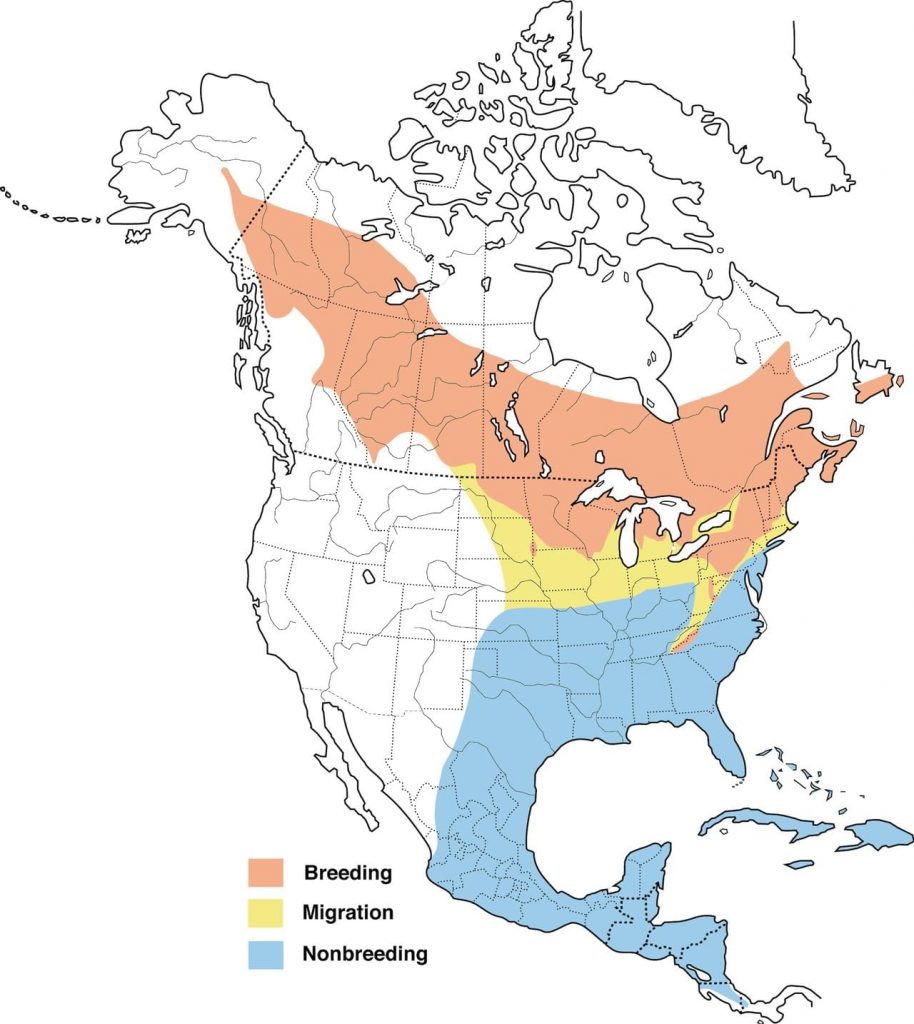
Source: All About Birds (Cornell Lab of Ornithology)
Sapsuckers are one of my favs! I always enjoy seeing these cool-looking birds and hearing their cat like calls each spring. The next time you’re out and about in the forest, look for the distinctive sapwells of the Yellow-bellied Sapsucker! Enjoy!